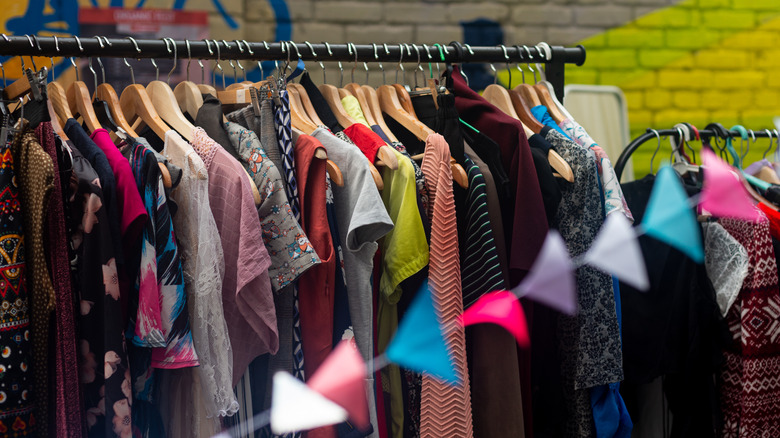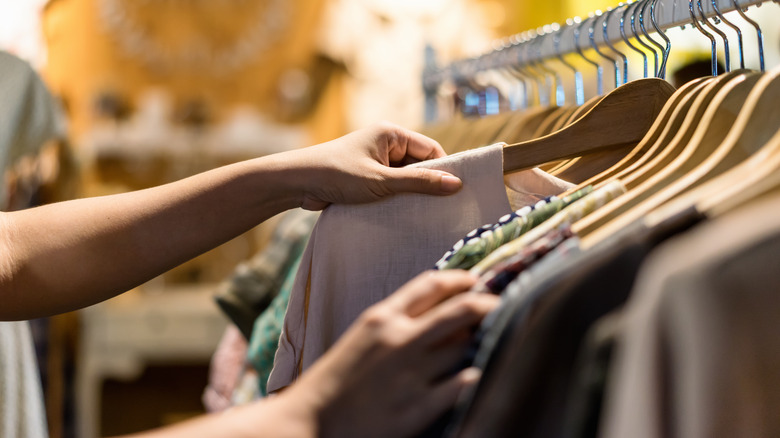Tips And Fabrics To Avoid In Your Thrift Store Hunt
Thrifting is fun, money-saving, and a great way to spend a rainy afternoon. Solo or with a friend, the activity can uncover some valuable finds. However, skimming through the racks and diving into the bargain bins can go terribly wrong if you are unaware of a few tips that are key in the second-hand hunt.
To start, make sure everything you buy fits first. You may be tempted to purchase an item over the thrill of the incredibly low price. But it will be worth even less than what the price tag says if it doesn't fit. Second, make a plan. Thrift stores are usually packed to the brim. If you know what you're looking for, you'll be saving valuable time (via The Good Trade). Third, and perhaps the most important to remember, is that there are some fabrics you should avoid while thrifting, and here's why.
It may come as a surprise to many, but your nose may be the most valuable compass you have in finding the right items in a thrift shop.
If you're wanting to stay green and clean
Avoid fabrics that have noticeable odors like cigarette smoke, mildew, or body odor. Yes, you know someone else has previously worn the clothes, but you don't want noticeable and smelly traces of this fact. In addition to smell, you should also check that the fabric you're purchasing doesn't have any stains (via Money Talks News). Both of these flaws may be erased with a cycle in the wash. But is it really worth the gamble?
If you are thrifting for environmental reasons, then you want to avoid synthetic fabrics like rayon, polyester, acrylic, acetate, and nylon. These are not biodegradable materials and are known to pollute the environment (via Lagom). You'll also want to avoid garments that have noticeable signs of wear and tear (unless that's what you're going for). Check if sweaters have already begun pilling. Or that the inner seams of pants are not already barely holding on for dear life (via Money Talks News).
As previously stated, thrifting is a great way to spend an afternoon and fill your closet with some pretty special items. We just hope you follow these tips and enter your next second-hand shop with a ready nose, a ready plan, and enough time to really examine what you want to buy.

